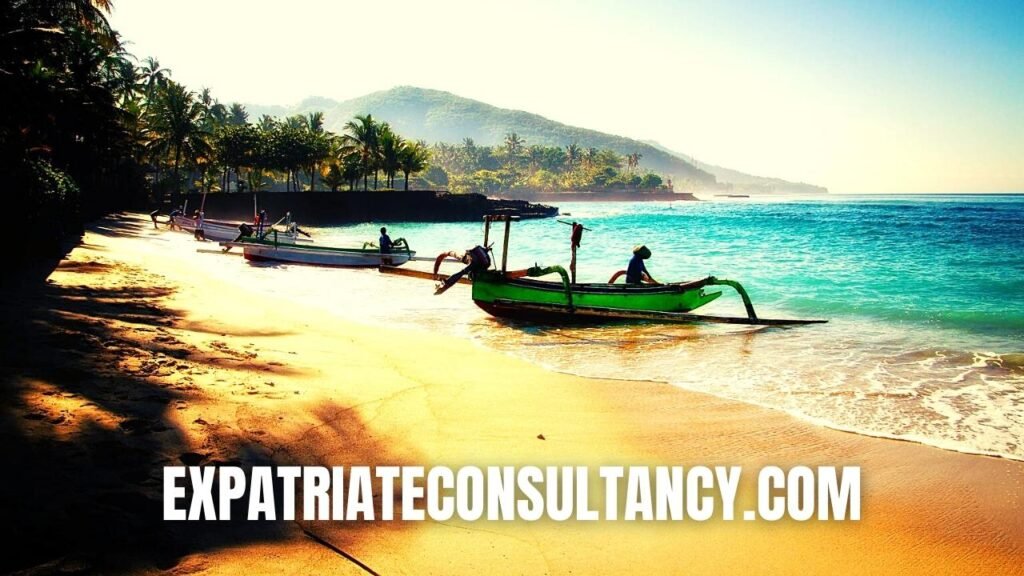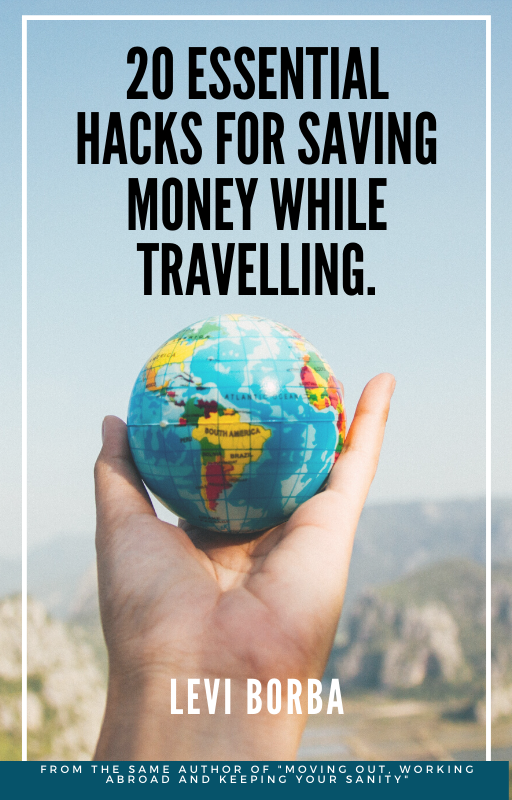Believe it or not, retiring in this place might cost less than staying in your hometown – and this is one of the most beautiful places in Europe. With its stunning landscapes, rich history, and vibrant culture, this destination offers an enticing lifestyle that many overlook. In fact, it has been ranked among the best cities to retire in Europe due to its affordable cost of living and access to quality healthcare. Embrace the charm of local markets, delightful cafes, and picturesque views while enjoying a more relaxed pace of life.
Hollywood frequently uses this region as the backdrop for very famous movies. From Oscar winners like Life is Beautiful and The English Patient to blockbusters like Gladiator and James Bond – Quantum of Solace.
This part of Italy has more than beauty. It is sunny—on average, it has 290 days of sunshine and clear skies per year.
It is healthy—people there live almost 84 years on average, a life expectancy similar to Japan and Switzerland and much higher than the US.
But above all of that, it’s surprisingly affordable.
What if I told you that on a middle-class income, you could retire to Italy and live like a baron?
I will show you the pros, cons, and costs of retiring in Tuscany – and even better than that, I will give you the recipe for living in an Italian mansion for the same price as a small apartment in Boston.
Ready?
Let’s start with the pros of moving to retire in Tuscany.
I will start with a VERY unusual one:
The Grants to Move to Tuscany
Yes, you heard it right. They will PAY you to move there. This year, 76 towns across Tuscany launched a major program to attract new residents. The name of this program is Residenzialità in Montagna 2024.
This program offers grants ranging from €10,000 ($11,200) to €30,000 ($33,500), covering up to 50% of the costs associated with buying and renovating a home in any of the 76 participating towns.
Places like Stazzema, a small town near the Apuan Alps, are only 49 minutes from the famous beaches of Viareggio.
Camporgiano, a charming town with well-conserved history, or…
Castiglione d’Orcia, where you can live in a quintessential Tuscan landscape.
Just don’t confuse the program Residenzialità in Montagna with another famous Italian program to attract residents, the 1-euro homes. The 1-euro homes are more focused in the southern regions of Italy, not Tuscany. The 1 euro homes program has some issues we discussed in another article.
Now, with such attractive grants, you might be wondering how much a house in those Tuscan towns would cost. We’ll discuss this later, and I guarantee you’ll be amazed, so keep reading.
The next pro is quite obvious, probably everyone knows, so I will not spend much time talking about it:
It’s the weather.
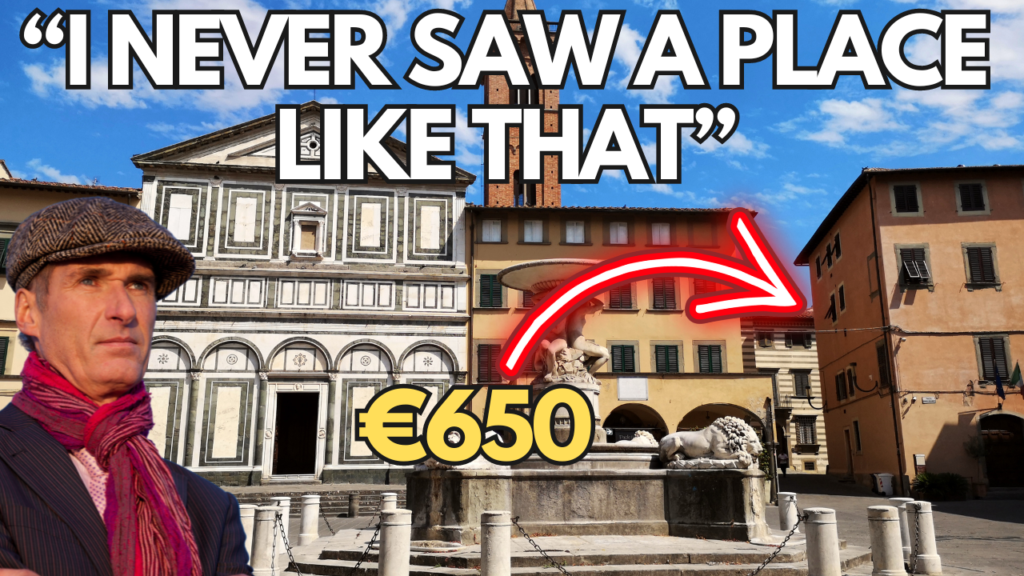
Tuscany’s Mediterranean climate is ideal for both human life and wineries. It has warm summers and relatively mild winters. It is also very sunny, so if you have allergies or asthma, that is a big pro.
This glorious weather also contributes to our next positive thing about Tuscany: the high quality of life. Tuscany has a Human Development Index of 0.912, one of the highest in all of Italy. This is an HDI similar to Florida—but the cost of living there is WAY lower than Florida, and very soon I will show you how much cheaper it is.
Another thing that is evidence of the Tuscan high quality of life is their life expectancy.
Take these numbers: The average American lives 79 and a half years. The average German lives 81 and a half years, and the same is valid for the average British. Meanwhile, the average Tuscan resident can expect to live 84 years. This is similar to Switzerland and just a bit lower than Japan!
Things like excellent weather, healthy cuisine, and active habits contribute to this long life expectancy.
But… here I will enter into a bit of a polemic: There is also another factor that makes Tuscans live longer. Some locals might disagree, while others will say it’s true, but I am talking about…
The healthcare system.
If you talk to Italians, especially the older ones, they will tell you that the public healthcare system is not that good anymore. The major issue is the waiting time for treatments, the lines, and the understaffing and underfunding. But it is still among the best in Europe, and if you do have legal residency, a lot of treatments are free of charge.
When you consider both the public and the private healthcare systems, Italy indeed fares very well, having 16 of the world’s best hospitals. Tuscany has one of the best hospitals in all of Europe: the Azienda Ospedaliero Universitaria Careggi. Another hospital, the Policlinico Sant’Orsola-Malpighi in Bologna, is also not far from many Tuscan towns. And if you use private healthcare in Italy, the prices are WAY, WAY lower than what you would pay in the US.
To give you an idea, an appointment at a pronto soccorso or guardia medica costs between 27 to 35 euros. In the US, that’s what you’d pay just to park your car for a medical appointment.

Another point that might bring a bit of polemic because older people will say that right now Italy is much worse, is the…
Safety.
Here is the thing: larger cities in Italy in fact became more dangerous—not long ago, I made a video about Milan explicating how things changed there. Very touristic places, like Rimini, also saw an increase in crime. However, the situation is completely different in smaller towns.
In general, Italy is SAFE! It is actually one of the safest countries in the world, and Tuscany, in particular, enjoys low crime rates compared to other European countries.
Another positive thing is the public transport in medium and big cities.
For example, Florence’s main train station, Santa Maria Novella, connects directly to major cities like Pisa, Siena, Arezzo, and Lucca. Moreover, buses in Florence are managed by Autolinee Toscane, which covers urban and suburban areas, ensuring widespread accessibility. Other companies like Tiemme Toscana Mobilità provide connections between smaller towns, and it is possible to even reach small villages by bus, but the service frequency is generally lower.
Since we are talking about transport, a remarkable fact about Tuscany is…
The good connectivity by air and rail with the rest of Italy and Europe.
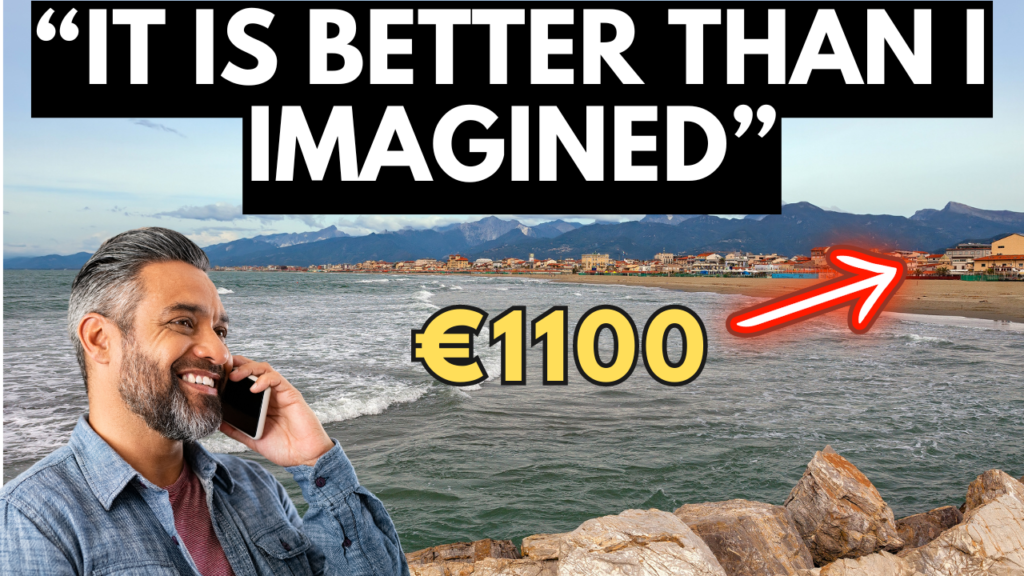
Tuscany’s central location in Italy provides easy access to other parts of Europe. The region is served by two main international airports: Florence Airport, Peretola (FLR), and Pisa International Airport, Galileo Galilei (PSA), and both have flights to numerous countries. Beyond air travel, Tuscany’s rail network is extensive and well-integrated, offering excellent connections to Italy and other parts of Europe.
The region is well integrated into the extraordinary Italian high-speed rail network, the Frecciarossa and Italo trains go from Florence to Rome in only 1.5 hours and to Milan in under 2 hours. So overall, it is very easy to travel to and from Tuscany, guaranteeing that if, one day, you get bored with the rolling hills, beautiful sunshine, and wonderful Chianti wine, you just take a train or a plane and visit somewhere else—super easy!
The next pro is the cost of living.
Here is a disclaimer: Tuscany is far from being the cheapest region in Italy—we made an entire article about the cheapest part of Italy.
Compared to there, Tuscany is relatively more costly. However, when you compare the Tuscan prices to US or UK prices, you will see that it is still far cheaper. For example, a kg of grapes in a supermarket in Livorno costs 2.49 euros, or 2.8 dollars. In the US, the cheapest one I found was 3.8 dollars per kg, or 36% more expensive.
220 grams (8oz) of Philadelphia Cream Cheese in this supermarket in Livorno costs 2 euros, or 2.2 dollars. The same amount of Cream Cheese, from the same brand, in the US costs 3 dollars and 13 cents—42% more! In general, these 30% to 40% cheaper food prices are normal when we compare Tuscany to the US, except for milk, which is quite expensive in Italy.
Other than healthcare and food, are medicines, cosmetics, public transportation, and… dining out—yes, dining out in Tuscany is way cheaper than in the US, especially outside tourist areas.
In the Eni Cafe, one of the best restaurants in the heart of Tuscany, you can have a plate of salmon filets with zucchini and squash sauce for… 10 euros—only 10 euros. In the US, a cheeseburger from a fast-food chain like Five Guys costs more than that.
Another thing that is very affordable in many Tuscan cities—but not Florence—is housing.
When I saw the prices of apartments, houses, and entire villas in some cities I was truly shocked—the prices just look TOO GOOD. In a few minutes, I will show you three Tuscan cities and the fabulous homes you can live in there, for the price of a tiny studio in the US.
The Cons of Living in Tuscany
However, before that, I need to tell you the negative part of living and retiring in Tuscany. Because that will make you understand why living in certain parts of Italy is… so cheap. The cost of living can sometimes be misleading, as many areas may lack modern amenities or have limited access to healthcare services. Additionally, compared to the idyllic lifestyle of retirement living in Greece, you might find that Tuscany’s charm comes at the price of certain practical drawbacks, such as higher taxes and bureaucracy. Therefore, it’s crucial to weigh these factors carefully before deciding on your retirement destination.
So let’s start with the cons of retirement in Tuscany.
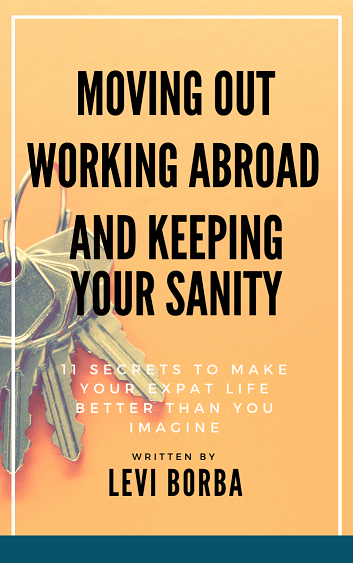
The first is that the logistics of moving around can be challenging.
The farther you go from the coast and from large cities, the worse this problem is—some small, local roads are bad, narrow, and poorly maintained. There are also cases of blocked roads for reasons like public works or snow during the winter. Still, driving in Tuscany is not as bad as driving in Sicily, but it is also not as seamless as driving in Lombardy—It is a middle term.
If you ever drove in Naples, like I did, Tuscany will be a walk in the park.
The next con is a bit more serious—the language barrier.
Only 34% of the population in Italy speaks English, and outside big metropolitan areas, this number is much smaller. So if you want to stay for more than a few months, I really recommend you to learn Italian.
The good thing about Tuscany and that is very interesting—is that modern Italian is a direct descendant of the Tuscan language. Yes, the Tuscans “invented” the Italian language, so everyone there speaks Italian as a first language.
This is a great upside over other regions like Sicily or Sardinia, where many locals speak Sicilian or Sardinian on a daily basis instead of Italian. To make it even better, Italian is a very easy language to learn—so you should start learning it even before moving there. The method I use to learn new languages which I recommend is this one (by using this link we both get a Bonus!): https://www.lingq.com/?referral=LevideSouza
The next negative point, however, is more difficult to get around:
The bureaucracy.
A local explained to us how bureaucracy works there:
“Italy has the most red tape to get ANYTHING done coming in second only to Greece, the inventors of bureaucracy. You’ll be waiting in governmental offices for weeks or months to get approvals on the smallest things.”
I have a friend who literally walks with a large folder full of documents every time she goes to some government office for something. She told me she does that because office employees often ask for random documents, and if she does not have them on hand, printed, they will tell her to come back next week. So she just carries, every time, all her documents in a single big folder.
Sounds very Kafkaesque to me, and you should be alerted about the bureaucratic nature of Italy, so you don’t get disappointed or nervous.
Another negative aspect is the high taxation.
This is something that is also controversial, since recently, in an attempt to attract more foreigners, especially retirees, to the southern regions, the government created a special tax regime for that part of the country.
In regions like Sicily, Calabria, Puglia, and a few others, if you move there for retirement, you will pay only 7% of income taxes. Unfortunately, this benefit is not valid for Tuscany, and the amount of income tax you will pay there is considerably higher.
Let’s imagine you make 50,000 euros per year (around 56,000 dollars); in Tuscany, you would pay €14,450 per year in income tax, or 28.9% of your total income.
This is not as high as France’s, but higher than Greece’s, for example, where the income tax for foreign retirees is just 7%. If you are an American citizen, of course, you also need to file taxes in the US.
However, and this is some little good news: there is a treaty between both countries to avoid double taxation, so if you qualify, you can have some credits from the taxes paid in the US so you can pay lower taxes in Italy.
Now that you know the pros and cons of Tuscany, one question remains:
Where to live there? What are the best places?
As I said before, Florence is the most expensive city in the region; it is very touristy, so it is not the best choice. Instead, I will show you three cities that offer lower prices, good infrastructure, and high quality of life.
The Best Places to Live in Tuscany, Italy, as an Expat Retiree
The first city I will talk about is Livorno
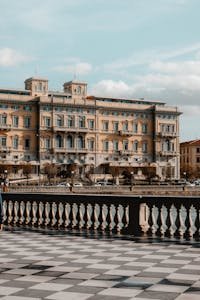
Of the three cities, this is the only one at the seaside, and also the biggest one, with 157,000 residents. Due to its size, Livorno has a well-developed healthcare system with modern hospitals and clinics, ensuring reliable medical care.
The public transportation is efficient, with frequent trains and buses connecting you to nearby cities like Pisa and Florence. The city is also known for its fresh seafood markets, like the historic Mercato Centrale.
This is what an Italian told us about Livorno:
“Livorno is like the Napoli of Tuscany; it is very different compared to the shiny Firenze.” And this is interesting because in general, many people consider Livorno a very authentic city. Now, time for the most important part: what can you afford in Livorno for the price of renting a small studio in Chicago—$1480 or €1320 per month?
For only 800 euros—less than 900 dollars—you can rent a 4-room apartment in a more central area. If instead of renting, you prefer to buy this apartment, you can do it for just 145,000 euros—162,000 dollars.
Do you know what you buy with $162,000 in Boston? Nothing, absolutely nothing. In fact, the cheapest thing you can buy in Boston costs 238,000 dollars, and it is a PARKING SPACE.
Another place that was recommended by locals is Empoli.
Despite being smaller, Empoli has a good advantage: the location, because it is just 30 to 50 minutes from two bigger Tuscan cities: Florence and Pisa.
So you have the benefit of being close to the infrastructure of those larger urban centers while paying much, much lower prices. How low? Well, very low—for example, you can rent a 3-room apartment in Empoli for only €650 per month. This is less than 750 dollars! I asked ChatGPT where I can find a 3-room apartment in the US for such a price because any place in Miami or Fort Lauderdale would cost more than that.

ChatGPT told me that this price is possible to find in Mobile, Alabama, so I went to check why Mobile, Alabama, has the same prices as Empoli, Italy. Well, the most striking fact is that, while the homicide rate in Italy is 0.5 murders per 100,000 residents per year, in Mobile, Alabama, it is 20.1. So yes, maybe in the US you can live for the same cost as Empoli if you don’t mind living in a place 40 TIMES MORE VIOLENT.
Now, going back to other positive things of Empoli: every 30 minutes, there is a train departing from there to Florence, and the ticket costs only 5 euros per trip. If you enjoy nature, the proximity to the Arno River and the Tuscan countryside provides easy access to outdoor activities, making Empoli a solid choice for those who want both convenience and a slower pace of life.
This is what a local told us:
“I live in Empoli, a 50-thousand-resident town located between Pisa and Florence. The cost of living is good, services are more than decent. From there, you can easily travel by train to Florence, Pisa, Siena, and Lucca.”
And since we mentioned…
The region of Lucca is another place that is quite attractive for retirement in Tuscany.
Here is what a resident from Lucca told us:
“It’s not a very big city, but it still offers a lot of comforts and is very well connected to nearby cities by roads, trains, etc.” The city is compact, with essential services like healthcare and shopping easily accessible on foot. It is such a lovely city that even people from surrounding cities come to Lucca just to spend their free time, as this person told us: “I live in Pisa, 30 minutes from Lucca, so I go there often, and the vibe is amazing, especially for families. Also, it is so close and well connected to basically everything—the beach, the mountains, the main cities. Food and weather are amazing.”
Healthcare is also a strong point in Lucca. The city has modern medical facilities and a well-regarded public health system. Their main hospital is the San Luca Hospital, which is public and well-evaluated by users. To be honest, I don’t know many public hospitals that have so many people praising their staff in public reviews as this hospital.
The downside of Lucca is that it is quite attractive to tourists. You will see signs in English everywhere, and while this might be good for those who don’t speak Italian, it also means that the city has prices a bit higher than one could expect—still not as expensive as Florence, of course, but surely higher than the two cities we mentioned previously. On the other hand, the region surrounding Lucca is enchanting, and its towns have much lower prices.
One such town is Bagni di Lucca, famous for its thermal baths with natural hot springs that have been used for centuries.
Another attractive option is Capannori, one of the largest municipalities in the area and known for its beautiful villas and gardens. Capannori offers a peaceful rural environment while still being close to Lucca and its amenities.
Now let’s see what you can find in the region of Lucca for the price of renting a small studio in Chicago—$1480 dollars per month.
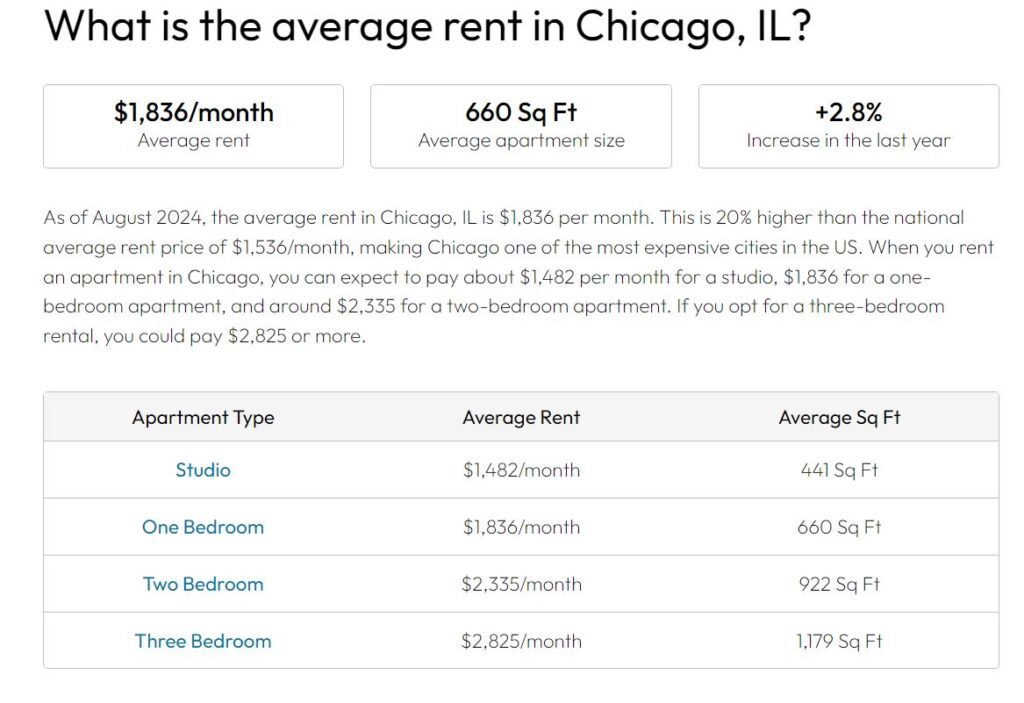
Well, for such a big sum, you could very afford to live in two of the most expensive areas of the entire region: Marina di Pietrasanta or Viareggio. In these places, you can get a 4-room apartment in front of the beach, for the same you would pay for a little studio in Chicago or Boston.
Now let’s say you want to live in the countryside and buy a house instead of renting, but you have only 220,000 dollars. Probably you think you cannot afford anything decent in Tuscany, right? After all, 220,000 dollars is less than the price of an average house in Mississippi or Alabama. So here’s a surprise—for much less, you can buy… This villa in Gambassi Terme, with a swimming pool.
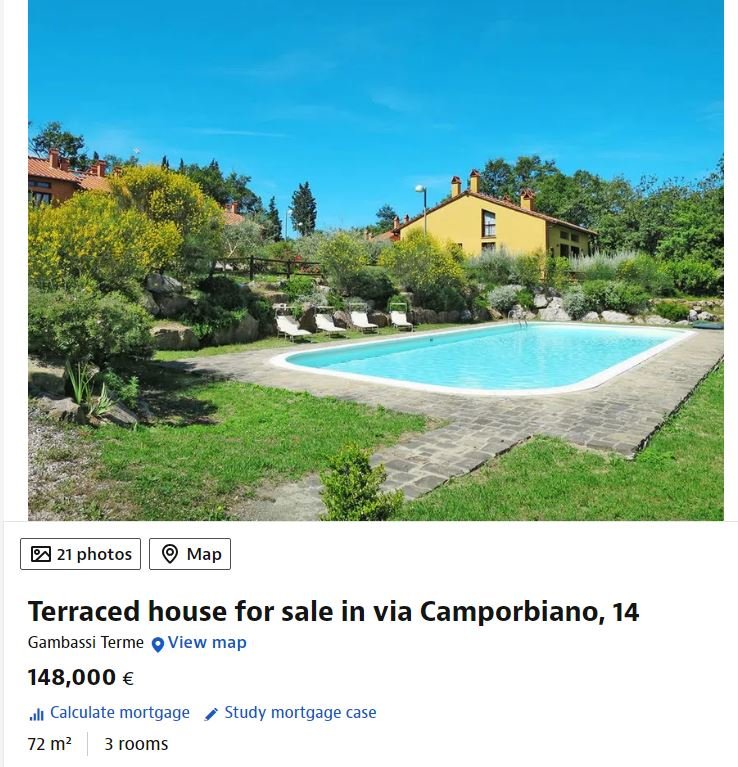
Or this splendid 5-room house in Massa-Carrara, which has the most spectacular view and also, of course, a swimming pool.
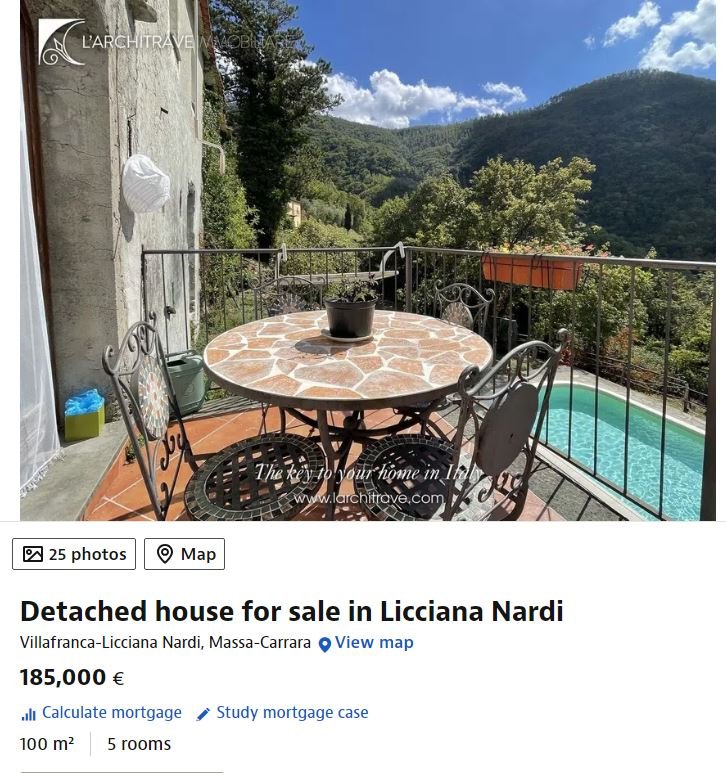
And all that for a price similar to what you pay to live in Cleveland, Ohio.
Now, I talked a lot here about the pros and advantages of Tuscany, but there are parts of Italy where you have an added benefit: MUCH, MUCH lower income taxes.
Levi Borba is the founder of expatriateconsultancy.com, creator of the channel The Expat, and best-selling author. You can find him on X here.
